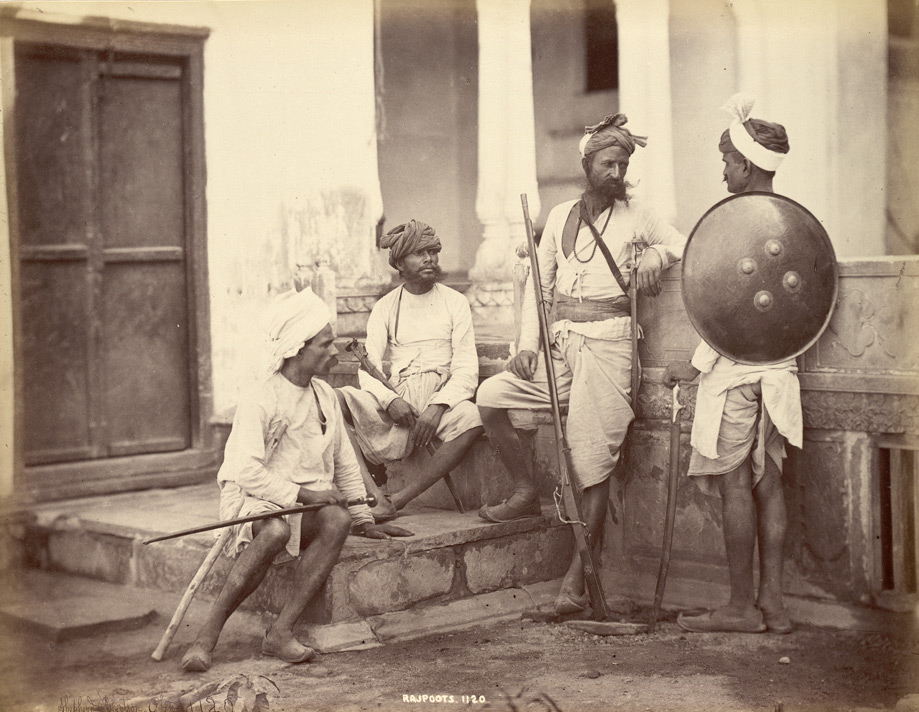|
Ahluwalia (caste)
Ahluwalia (also transliterated as Ahluvalia) is an Indian caste native to the Punjab region. The Ahluwalias originally belonged to the Kalal caste, whose traditional occupation was brewing country liquor. The Kalals held a low status in the traditional caste hierarchy, close to the outcastes. In the 18th century, the Sikh chief Jassa Singh Ahluwalia, who belonged to the Kalal caste, adopted the surname "Ahluwalia" after the name of his ancestral village. His descendants became the ruling dynasty of the Kapurthala State. In the late 19th century, other Kalals also adopted the Ahluwalia identity, as part of a Sanskritisation process to improve their social status, resulting in the formation of the Ahluwalia caste. They gave up their traditional occupations, as they gained political power and as the colonial British administration started regulating distribution and sale of liquor. This attempt was successful, and the Ahluwalias came to be considered equal to the high-ranked Kh ... [...More Info...] [...Related Items...] OR: [Wikipedia] [Google] [Baidu] |
Indian Caste System
The caste system in India is the paradigmatic ethnographic example of classification of castes. It has its origins in ancient India, and was transformed by various ruling elites in medieval, early-modern, and modern India, especially the Mughal Empire and the British Raj. It is today the basis of affirmative action programmes in India as enforced through its constitution. The caste system consists of two different concepts, ''varna'' and '' jati'', which may be regarded as different levels of analysis of this system. Based on DNA analysis, endogamous i.e. non-intermarrying Jatis originated during the Gupta Empire. Our modern understanding of caste as an institution in India has been influenced by the collapse of the Mughal era and the rise of the British colonial government in India. The collapse of the Mughal era saw the rise of powerful men who associated themselves with kings, priests and ascetics, affirming the regal and martial form of the caste ideal, and it also r ... [...More Info...] [...Related Items...] OR: [Wikipedia] [Google] [Baidu] |
Krishna
Krishna (; sa, कृष्ण ) is a major deity in Hinduism. He is worshipped as the eighth avatar of Vishnu and also as the Supreme god in his own right. He is the god of protection, compassion, tenderness, and love; and is one of the most popular and widely revered among Indian divinities. Krishna's birthday is celebrated every year by Hindus on Krishna Janmashtami according to the lunisolar Hindu calendar, which falls in late August or early September of the Gregorian calendar. The anecdotes and narratives of Krishna's life are generally titled as ''Krishna Leela''. He is a central character in the ''Mahabharata'', the '' Bhagavata Purana'', the ''Brahma Vaivarta Purana,'' and the '' Bhagavad Gita'', and is mentioned in many Hindu philosophical, theological, and mythological texts. They portray him in various perspectives: as a god-child, a prankster, a model lover, a divine hero, and the universal supreme being. Quote: "Krsna's various appearances as a di ... [...More Info...] [...Related Items...] OR: [Wikipedia] [Google] [Baidu] |
Brewing And Distilling Castes
Brewing is the production of beer by steeping a starch source (commonly cereal grains, the most popular of which is barley) in water and fermenting the resulting sweet liquid with yeast. It may be done in a brewery by a commercial brewer, at home by a homebrewer, or communally. Brewing has taken place since around the 6th millennium BC, and archaeological evidence suggests that emerging civilizations, including ancient Egypt and Mesopotamia, brewed beer. Since the nineteenth century the brewing industry has been part of most western economies. The basic ingredients of beer are water and a fermentable starch source such as malted barley. Most beer is fermented with a brewer's yeast and flavoured with hops. Less widely used starch sources include millet, sorghum and cassava. Secondary sources (adjuncts), such as maize (corn), rice, or sugar, may also be used, sometimes to reduce cost, or to add a feature, such as adding wheat to aid in retaining the foamy head of the be ... [...More Info...] [...Related Items...] OR: [Wikipedia] [Google] [Baidu] |
Indian Castes
The caste system in India is the paradigmatic ethnographic example of classification of castes. It has its origins in ancient India, and was transformed by various ruling elites in medieval, early-modern, and modern India, especially the Mughal Empire and the British Raj. It is today the basis of affirmative action programmes in India as enforced through its constitution. The caste system consists of two different concepts, ''varna'' and '' jati'', which may be regarded as different levels of analysis of this system. Based on DNA analysis, endogamous i.e. non-intermarrying Jatis originated during the Gupta Empire. Our modern understanding of caste as an institution in India has been influenced by the collapse of the Mughal era and the rise of the British colonial government in India. The collapse of the Mughal era saw the rise of powerful men who associated themselves with kings, priests and ascetics, affirming the regal and martial form of the caste ideal, and it also re ... [...More Info...] [...Related Items...] OR: [Wikipedia] [Google] [Baidu] |
Ahluwalia
{{disambiguation ...
Ahluwalia may refer to: * Ahluwalia (misl) * Ahluwalia (surname) * Ahluwalia (caste) Ahluwalia (also transliterated as Ahluvalia) is an Indian caste native to the Punjab region. The Ahluwalias originally belonged to the Kalal caste, whose traditional occupation was brewing country liquor. The Kalals held a low status in the t ... [...More Info...] [...Related Items...] OR: [Wikipedia] [Google] [Baidu] |
Hinduism
Hinduism () is an Indian religion or '' dharma'', a religious and universal order or way of life by which followers abide. As a religion, it is the world's third-largest, with over 1.2–1.35 billion followers, or 15–16% of the global population, known as Hindus. The word ''Hindu'' is an exonym, and while Hinduism has been called the oldest religion in the world, many practitioners refer to their religion as '' Sanātana Dharma'' ( sa, सनातन धर्म, lit='the Eternal Dharma'), a modern usage, which refers to the idea that its origins lie beyond human history, as revealed in the Hindu texts. Another endonym is ''Vaidika dharma'', the dharma related to the Vedas. Hinduism is a diverse system of thought marked by a range of philosophies and shared concepts, rituals, cosmological systems, pilgrimage sites, and shared textual sources that discuss theology, metaphysics, mythology, Vedic yajna, yoga, agamic rituals, and temple building, among other to ... [...More Info...] [...Related Items...] OR: [Wikipedia] [Google] [Baidu] |
Sikhism
Sikhism (), also known as Sikhi ( pa, ਸਿੱਖੀ ', , from pa, ਸਿੱਖ, lit=disciple', 'seeker', or 'learner, translit=Sikh, label=none),''Sikhism'' (commonly known as ''Sikhī'') originated from the word ''Sikh'', which comes from the Sanskrit root ' meaning "disciple", or ' meaning "instruction". Singh, Khushwant. 2006. ''The Illustrated History of the Sikhs''. Oxford University Press. . p. 15.Kosh, Gur Shabad Ratnakar Mahan. https://web.archive.org/web/20050318143533/http://www.ik13.com/online_library.htm is an Indian religion that originated in the Punjab region of the Indian subcontinent,"Hinduism, Buddhism, Jainism and Sikh originated in India." around the end of the 15th century CE. It is the most recently founded major organized faith and stands at fifth-largest worldwide, with about 25–30 million adherents (known as Sikhs) .McLeod, William Hewat. 2019 998 Sikhism developed from the spiritual teachings of Guru Nanak (1469–1539), the faith's first gu ... [...More Info...] [...Related Items...] OR: [Wikipedia] [Google] [Baidu] |
Twarikh Guru Khalsa
Twarikh Guru Khalsa a historical book of the Sikhs from their origin to the time when they lost the Punjab to the British. The author of the book is Giani Gian Singh. The work is divided into five parts: *Janam Sakhi Dasari Guruari presents biographies of Guru Gobind Singh. *Shamsher Khalsa deals with the career of Banda Singh Bahadur. *Raj Khalsa describes the rise of the twelve misls The Misls (derived from an Arabic word مِثْل meaning 'equal') were the twelve sovereign states of the Sikh Confederacy, which rose during the 18th century in the Punjab region in the northern part of the Indian subcontinent and is cit .... *Sardar Khalsa contained accounts of Sikh principalities. *Panth Khalsa treats of Sikh sects, gurdwaras and preaching centres. References {{Sikhism History of Sikhism ... [...More Info...] [...Related Items...] OR: [Wikipedia] [Google] [Baidu] |
Lepel Griffin
Sir Lepel Henry Griffin, (20 July 1838 – 9 March 1908) was a British administrator and diplomat during the British Raj period in India. He was also a writer. Early life Lepel Henry Griffin was born in Watford, England on 20 July 1838. His father, Henry, was a clergyman in the Church of England and his mother was Frances Sophia. His mother had been married previously and thus Griffin had ten half-siblings as well as two full sisters. Griffin was educated briefly at Harrow School, having also attended Malden's Preparatory School, Brighton. He did not go to university but was privately tutored for the competitive examination for entry to the Indian Civil Service. He sat and passed those examinations during 1859 and 1860, being ranked tenth among the 32 successful candidates. Career He reached India in November 1860 and was posted to Lahore. The mannerisms of Griffin had attracted attention in India from the time of his arrival there, and in 1875 Sir Henry Cunningham s ... [...More Info...] [...Related Items...] OR: [Wikipedia] [Google] [Baidu] |
Jats
The Jat people ((), ()) are a traditionally agricultural community in Northern India and Pakistan. Originally pastoralists in the lower Indus river-valley of Sindh, Jats migrated north into the Punjab region in late medieval times, and subsequently into the Delhi Territory, northeastern Rajputana, and the western Gangetic Plain in the 17th and 18th centuries. Quote: "Hiuen Tsang gave the following account of a numerous pastoral-nomadic population in seventh-century Sin-ti (Sind): 'By the side of the river.. f Sind along the flat marshy lowlands for some thousand li, there are several hundreds of thousands very great manyfamilies ..hichgive themselves exclusively to tending cattle and from this derive their livelihood. They have no masters, and whether men or women, have neither rich nor poor.' While they were left unnamed by the Chinese pilgrim, these same people of lower Sind were called Jats' or 'Jats of the wastes' by the Arab geographers. The Jats, as 'dromedary men.' we ... [...More Info...] [...Related Items...] OR: [Wikipedia] [Google] [Baidu] |
Shalivahana
Shalivahana (IAST: Śālivāhana) was a legendary emperor of ancient India, who is said to have ruled from Pratishthana (present-day Paithan, Maharashtra). He is believed to be based on a Satavahana king (or kings). There are several contradictory legends about him. Most legends associate him with another legendary emperor, Vikramaditya of Ujjain, in some way. In some legends, he is presented as an enemy of Vikramaditya; in other legends, he is named as a grandson of Vikramaditya; and in a few legends, the title Vikramaditya is applied to the ruler of Pratishthana. According to some historically inaccurate legends, his birth or one of his battle victories marked the beginning of the Shalivahana calendar era, which is another name for the Saka era. Legends ''Viracharita'' Ananta's heroic poem ''Viracharita'' (12th century CE) mentions Shalivahana as a rival of the king Vikramaditya of Ujjain. According to it, Shalivahana defeated and killed Vikramaditya, and then ruled from ... [...More Info...] [...Related Items...] OR: [Wikipedia] [Google] [Baidu] |







